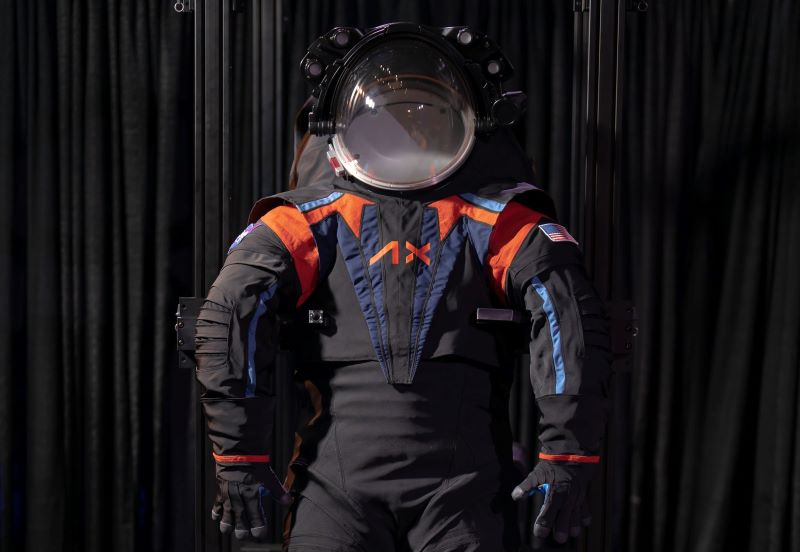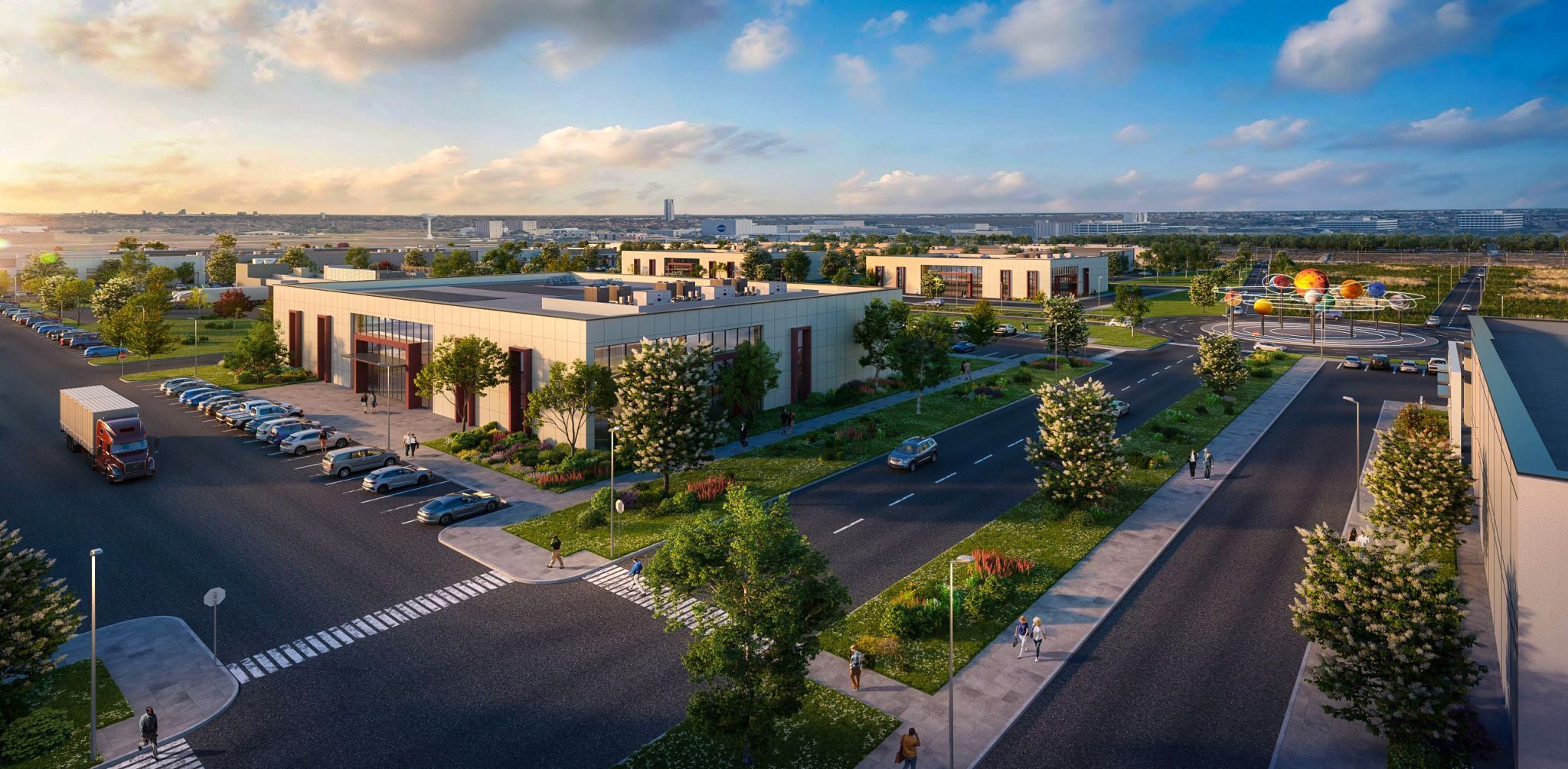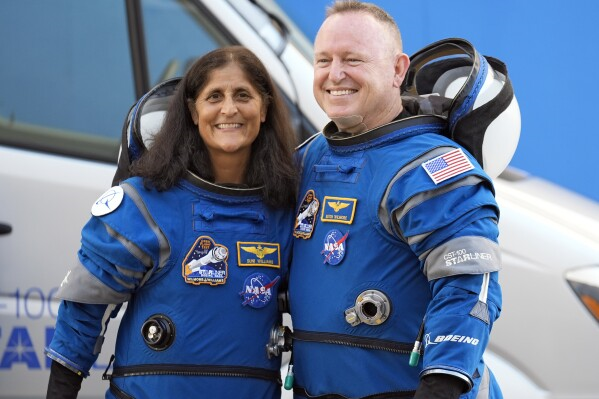Houston Companies Advancing Space Exploration and Innovation with NASA
Published Aug 09, 2023 by Hailea Schultz
As a leading aerospace hub with the renowned NASA Johnson Space Center, Houston remains a prime NASA project location, boasting more than 500 thriving aerospace companies.
So far this year, Houston-based companies have received multiple NASA contracts to help lead the future of space exploration and technology.
Axiom Space
Following the announcement of Axiom Mission 3 and the company’s return from the successful Axiom Mission 2, Axiom Space was again selected by NASA for the fourth private astronaut mission to the International Space Station (ISS).
Scheduled for a launch no earlier than August 2024 from the Kennedy Space Center in Florida, Axiom Mission 4 involves mission crew training with NASA, international partners, and SpaceX to prepare for a 14-day docking at the space station.
"Our Axiom Space team is looking forward to a fourth mission to the International Space Station,” said Michael Suffredini, CEO and president of Axiom Space in a recent press release. “These missions are instrumental in expanding commercial space activities and access to space for individuals and nations around the world, as well as developing the knowledge and experience needed to normalize living and working in microgravity.”
In addition to Axiom Mission 4, Axiom Space recently snagged its second International Space Station Extravehicular Activity (EVA) spacesuit task order from NASA to advance its Artemis III lunar spacesuit design for ISS spacewalking capabilities in low Earth orbit (LEO).
Similar to the Artemis III spacesuit, the new suit will accommodate a wide range of crew members, provide increased flexibility and feature life support systems, pressure garments, and power avionics and communication, according to Axiom Space.
“We are excited to add our orbital spacesuits as an option for NASA,” said Mark Greeley, Axiom Space EVA Program Manager. “The team is truly humbled to be a provider of spacesuits for the NASA Artemis missions and now a developer of spacesuits for future ISS missions. Aligning our spacesuit architecture for commercial LEO, lunar, and ISS is proving to be of great benefit in terms of streamlining designs and continuing to deliver the best value to NASA, while serving our future commercial astronauts on Axiom Station by the end of the decade.”
The contract includes an initial commitment of $5 million and a potential value of $142 million over four years, in which the Axiom Space team will offer design, certification and hardware to support NASA’s EVA systems training and real-time operations.
Axiom Space’s first task order was announced in 2022, awarding $228 million to design a spacewalking system that the Artemis III astronauts will wear on the lunar surface when they land on the moon. Both task orders fall under NASA’s Extravehicular Activity Services (xEVAS) contract which has a maximum potential value of $3.5 billion and allows Axiom Space to compete for contracts through 2034.
Collins Aerospace
After securing a $97.2 million EVA task order from NASA to conceive and craft an advanced spacesuit alongside support systems for extravehicular activities beyond the ISS, Collins Aerospace further garnered an additional $5 million to adapt its initial suit for lunar surface operations. Much like Axiom Space, this spacesuit endeavor also aligns with NASA’s Extravehicular Activity Services (xEVAS) contract.
"Our next-generation spacesuit design is nearly 90% compatible with a lunar mission," said Dave Romero, director, EVA & Human Surface Mobility Systems for Collins Aerospace in a press release. "This formal contract award will support continued efforts to modify our next-generation spacesuit, making it suitable to tasks on the Moon."
Intuitive Machines
In April, a joint venture led by Intuitive Machines with engineering and construction company KBR, landed a $719 million contract to support NASA’s Joint Polar Satellite System.
According to the National Environmental Satellite Data and Information Service, the Joint Polar Satellite System is considered the backbone of the global observing system with its satellites circling earth pole to pole and crossing the equator 14 times daily, providing full global coverage twice a day.
“Humanity’s advancement into the solar system is built upon more than a decade of innovation under NASA’s OMES contract, and Intuitive Machines intends to continue that legacy,” said Steve Altemus, Chief Executive Officer of Intuitive Machines in a press release. This win is of strategic importance, allowing Intuitive Machines to support NASA in designing, developing, and demonstrating critical technology required to support the emerging orbital servicing market, and a validation of the Company’s experience in spacecraft development, autonomous systems, and near-space communications. We look forward to collaborating with NASA to push the boundaries of what’s possible in space.”
Additionally, Intuitive Machines was awarded $2.4 million from NASA to collaborate with Washington, D.C.-based Zeno Power to create a Radioisotope Power System for astronauts travelling to the moon during its lunar night cycle. The lunar night cycle is a period of darkness on the moon that lasts 14 Earth days, where temperatures drop to as low as -279 Fahrenheit.
The new technology will work to enable lunar assets to survive and operate during the lunar night and in permanently shadowed regions of the Moon. Surviving the lunar night could advance exploration on the moon’s surface, extending mission timelines from two weeks to several years.
“NASA investing in mission longevity and the endurance of spacecraft paves the way for uninterrupted scientific exploration, enabling future robotic and human missions to unlock the mysteries of the lunar surface and propel humanity’s presence in space to new frontiers,” said Trent Martin, Intuitive Machines Vice President of Space Systems in a press release.
Intuitive Machines and Zeno Power expect to have the technology flight-ready for a 2027 lunar surface demonstration.
KBR
Through a $1.9 billion contract, KBR will provide planning and preparation services to several NASA programs, including the Johnson Space Center in Houston. KBR will also work at the Kennedy Space Center and the Marshall Space Flight Center in Alabama to support “International Space Station, Commercial Crew, Boeing Starliner, Orion, Space Launch System, Gateway, Human Lander System, Extravehicular Activity and Human Surface Mobility for lunar spacewalks, and low-Earth-orbit commercialization” programs, according to a news story from Houston’s Business Journal.
Some of the services KBR will offer the programs include “mission planning and preparation, astronaut and mission control center training, real-time flight execution, and future exploration vehicle design for all of NASA’s human spaceflight programs under the JSC’s Flight Operations Directorate.”
The contract follows KBR’s part in a joint venture with space exploration company Intuitive Machines, who landed a $719 million contract to work on NASA’s Joint Polar Satellite System.
Lunar Resources
In Phase II of funding from its Small Business Innovation Research Program, NASA doled out $98 million to almost 100 small businesses, including Houston-based Lunar Resources. The funding will provide support to Lunar Resources over the next two years as it executes its technology proposal of an Ultra-Electrical-Efficient Process to Perform Regolith Additive Manufacturing of Complex Structures.
Recent headlines have highlighted NASA not only for its funding but also for the inauguration of a novel center at the Johnson Space Center in Houston. This center is exclusively focused on fostering digital space innovation for the forthcoming era of spaceflight. By imparting crucial industry skills, the facility aims to strengthen the local aerospace engineering community.
As part of a strategic partnership, NASA’s new Digital Engineering Design Center will be operated by the University of Texas at El Paso Aerospace Center in collaboration with Johnson’s Engineering Directorate and the Space Technology Mission Directorate. Students andor engineers enrolled at the center will work on NASA projects related to in-situ resource utilization, which is a type of engineering that utilizes materials native to space.
Additionally, NASA announced that it will launch its first on-demand streaming service through the NASA app. NASA+ will showcase live coverage of future launches, documentaries and even original series. With the goal to inspire and spark interest in space exploration and innovation, NASA+ will offer engaging and informative content at no cost.
Learn more about Houston’s work in aerospace and aviation.
 The Houston Report
The Houston Report




















